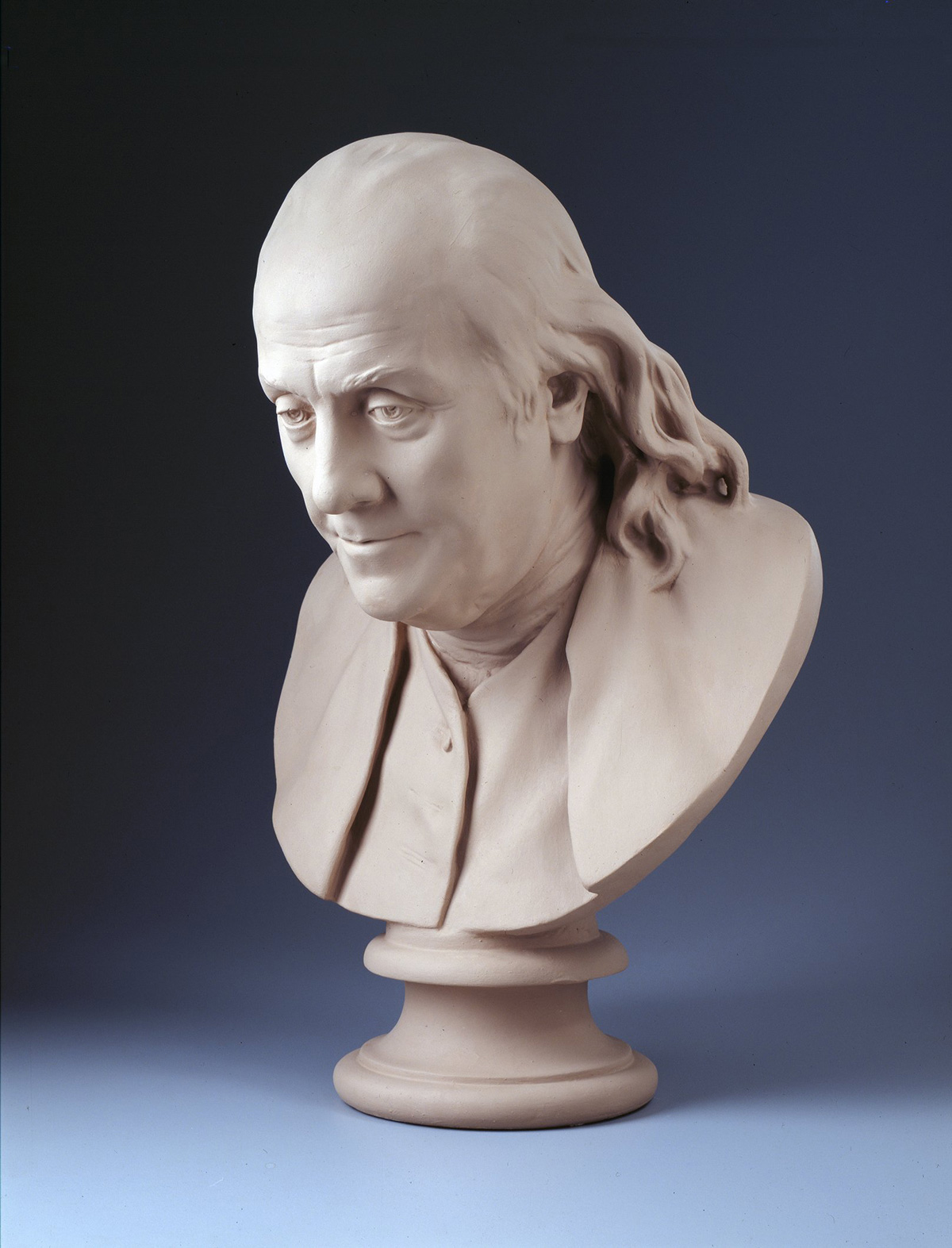Benjamin Franklin Bust by Houdon (Sculpture)
Artist/Maker: Unknown copy from Jean-Antoine Houdon (1741-1828)
Created: 1778
Origin/Purchase: France
Materials: plaster
Dimensions: 23 × 13 × 15 in.
Provenance (Copy): Copy made from original at the Boston Athenaeum
Accession Number: 1923-9
Historical Notes: Jefferson served with Franklin, the senior statesman of the Continental Congress, in Philadelphia in 1775, calling him "the greatest man & ornament of the age and country in which he lived."[1] He was a printer, author, inventor, statesman, scientist, and diplomat, and these accomplishments could not have failed to impress Jefferson.
Franklin's popularity in France increased French support for American independence. His image was well known and appeared in engravings and even in jewelry. Later, when Jefferson succeeded Franklin as minister to France in 1784, he said:
The succession to Dr. Franklin at the court of France, was an excellent school of humility. On being presented to any one as the Minister of America, the common-place question, used in such cases, was 'c'est vous, Monsieur, qui remplace le Docteur Franklin?' 'It is you, Sir, who replace Doctor Franklin?' I generally answered 'no one can replace him, Sir; I am only his successor.'[2]
This portrait of Franklin is one of two completed by Houdon. Franklin first sat for Houdon in 1778 and again in 1782, or later.[3] In the earlier portrait Franklin is clothed in simple Quaker dress; in the later work Franklin is classically draped. The earlier bust, whose size and treatment matches the other Houdon busts acquired by Jefferson, is probably the one that Jefferson selected for Monticello.
- Text from Stein, Worlds, 220
References
- ^ Jefferson to Samuel Smith, August 22, 1798, in PTJ, 30:484-87. Transcription available at Founders Online.
- ^ Jefferson to Reverend William Smith, February 19, 1791, in PTJ, 19:112-14. Transcription available at Founders Online.
- ^ For a full discussion see Jean Montague Massengale, "A Franklin by Houdon Rediscovered," Marsyas/New York University Institute of Fine Arts 12 (1964/1965): 1-15.
 Benjamin Franklin
Benjamin Franklin